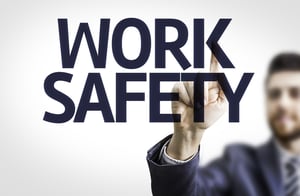Employers today are challenged with an ever-changing workforce and are often hiring young workers at their companies. Experience levels are usually very low for this demographic and along with that comes the increased risk of injury.
A recent study from the Centers for Disease Control and Prevention shows that the rate of nonfatal on-the-job injuries among the 15 to 24 age group is 1.2 to 2.3 times higher than that of the 25 to 44 age group.
Hospital emergency rooms treated an estimated 3.2 million occupational injuries to workers aged 15-24 from 2012 to 2018. Most of these accidents were lacerations and punctures and were frequently among workers in the leisure and hospitality industry.
So, as an employer, what can you do to reduce the possibility of these injuries among young workers? My recommendation would be these four additions to your safety processes:
- In-depth training – It has been recognized that employers sometimes don’t take the time to make sure a young employee understands the job they are doing and what safety hazards they could be facing. Employers need to educate employees on how to do their job while also avoiding injuries. Safety can never be overcommunicated!
- Orientation – Conduct an orientation that will address the hazards of doing the job. Make sure new employees know that if they are uncomfortable doing a job for fear of injury, they can approach their immediate supervisor without repercussion. Remember, they are young and many times will not be able to recognize a hazard on their own.
- Mentor – If possible, pair new employees with a more experienced employee that can show them the proper way to do the job.
- Safety Committee – Have an employee-run safety committee that is tasked with identifying safety hazards and investigating injuries to prevent repeat incidents. It is always a good idea to have employee involvement so they can take ownership of procedures and improvements instead of having safety pushed upon them.
The time and money spent now on properly training new employees will help everyone. Employees will avoid unnecessary injuries and employers will avoid increased insurance rates.
COMMENTS